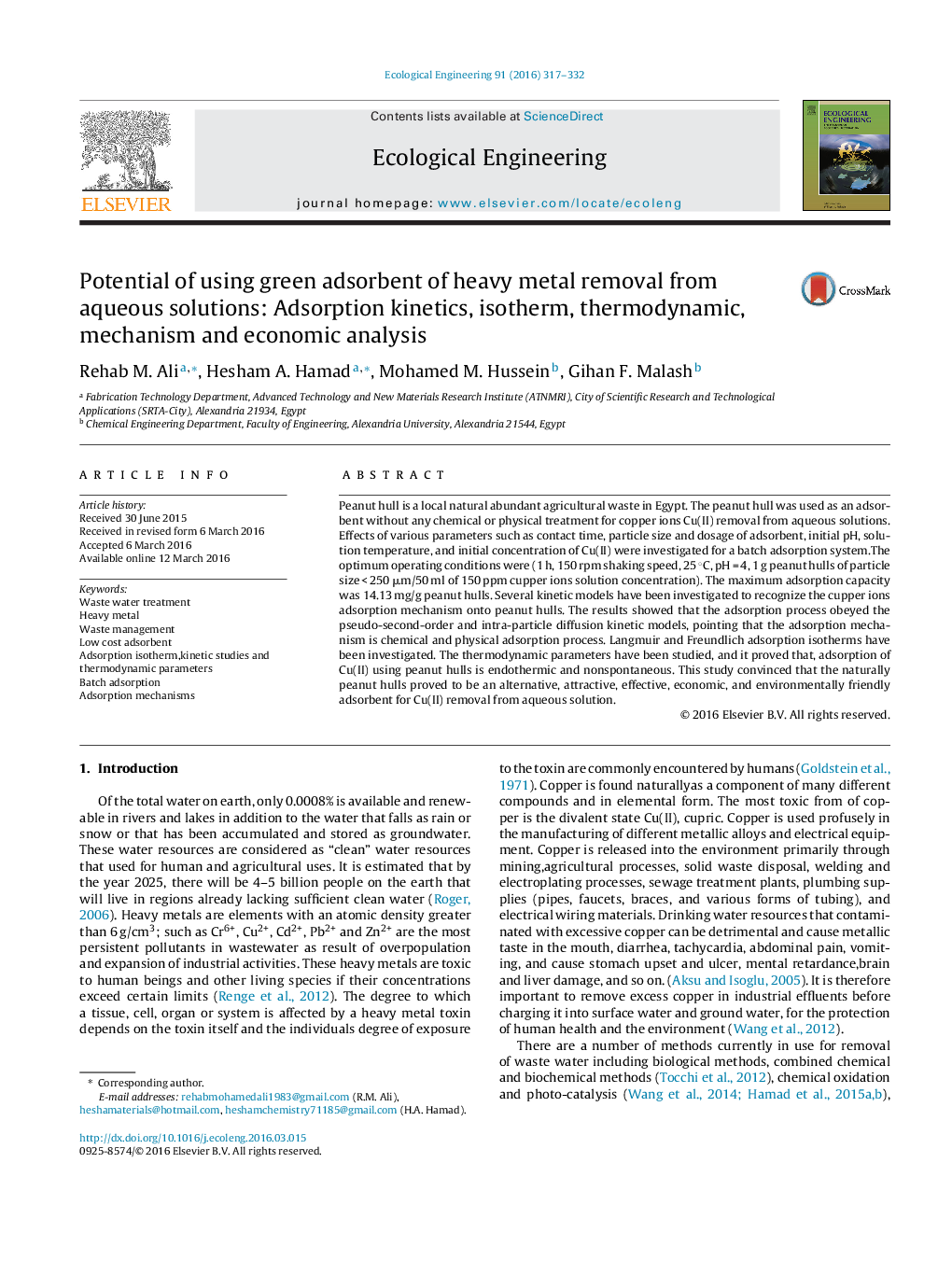| Article ID | Journal | Published Year | Pages | File Type |
|---|---|---|---|---|
| 6301336 | Ecological Engineering | 2016 | 16 Pages |
â¢Adsorption of Cu2+ has been achieved onto naturally peanut.â¢The effect of different factors on the adsorption has been investigated.â¢The adsorption kinetic, isothermal and thermodynamic parameters have been studied.â¢Possible mechanisms of adsorption process have been discussed in detail.
Peanut hull is a local natural abundant agricultural waste in Egypt. The peanut hull was used as an adsorbent without any chemical or physical treatment for copper ions Cu(II) removal from aqueous solutions. Effects of various parameters such as contact time, particle size and dosage of adsorbent, initial pH, solution temperature, and initial concentration of Cu(II) were investigated for a batch adsorption system.The optimum operating conditions were (1 h, 150 rpm shaking speed, 25 °C, pH = 4, 1 g peanut hulls of particle size < 250 μm/50 ml of 150 ppm cupper ions solution concentration). The maximum adsorption capacity was 14.13 mg/g peanut hulls. Several kinetic models have been investigated to recognize the cupper ions adsorption mechanism onto peanut hulls. The results showed that the adsorption process obeyed the pseudo-second-order and intra-particle diffusion kinetic models, pointing that the adsorption mechanism is chemical and physical adsorption process. Langmuir and Freundlich adsorption isotherms have been investigated. The thermodynamic parameters have been studied, and it proved that, adsorption of Cu(II) using peanut hulls is endothermic and nonspontaneous. This study convinced that the naturally peanut hulls proved to be an alternative, attractive, effective, economic, and environmentally friendly adsorbent for Cu(II) removal from aqueous solution.
